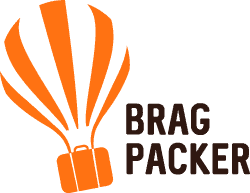The key difference between a great adventure and recurring frustration is in packing your rucksack right. Having a rucksack that fits well and is packed in the correct way to keep all your kit accessible and dry is actually harder than it sounds.
Hopefully you’ve found a good rucksack (thanks to our nifty guide) and have also understood the importance of frugal packing. The next step is to optimise on the space that a rucksack offers you, which is very different from packing a traditional suitcase. Packing your rucksack properly will ensure that you:
- Keep your valuables safe
- Get a balanced weight distribution in the pack – this can make all the difference on long hikes
- Pack/ unpack your rucksack faster and more efficiently – very useful when your bus leaves in under 2 minutes!
Here are some steps that will help you make the most of your limited space (and therefore, your next adventure):
- Heavy stuff goes in the middle: If you have the classic top-opening rucksack then it will be best to keep things such as your end of day stuff such as utensils or spare boots at the bottom where they are out of the way but can be easily accessed through the bottom zipper. Packing heavier items in the middle of the backpack as close to your back as possible will put less strain on you when carrying your rucksack.
- Balance the weight evenly on both sides of the pack: Set your rucksack upright while you pack the bag and keep weight dispersed over both sides evenly. Follow the same pattern with other items as they are placed in each compartment, taking care to balance the weight from left to right. Doing so helps to reduce fatigue and stress by distributing the load evenly between the shoulders.
- Side and top pockets are for non-valuables: This is where you can keep things that need to be easily accessible – water bottles, first aid kit, toilet paper, etc. Be extremely wary of keeping anything of value though.
- Keep the back of the rucksack relatively flat: If you have a frameless rucksack, place the flattest items against the panel that lies against your back. Avoid placing soft or bulky items here, since they can deform the shape of the bag, reducing the structural integrity. When you’re walking for long periods, this can cause uncomfortable bumps or protrusions that will irritate your back.
- Use clothes to fill space: Pack your clothes last, unless they make up the most substantial amount of material in your bag. Clothes are the easiest items to use as gap-fillers and jam into the remaining cracks. Roll clothing tightly rather than folding it. This will allow the clothes to take up less room while also reducing wrinkles from crushing.
- Consider using packing cubes/ pouches for clothes & smaller items: Using packing cubes can enable you to pack a lot more clothes in without crumpling them. In fact, you can even divide different outfits (for eg: Woollens, clothes for next 1-2 day hikes etc) and put them in separate bags to make unpacking and repacking easier. Same goes for toiletries – it’ll be convenient to look for them in a rucksack and makes them leak-proof.
- Find ways to nest items: Before you start jamming everything into your rucksack, check for ways you can start to save space by nesting things into one another. Keep your iPhone in your spare pair of shoes, or wrap up your passport in your jeans. This can be a great way of padding breakable items and hiding valuables.
Finally, be mindful of the weight. Every airline has different baggage allowances, but you can refer to our handy guide of weight regulations of most major airlines. As long as you keep the above in mind, you’re ready and well equipped to take off on your next big adventure.
Dont pack, Bragpack!


